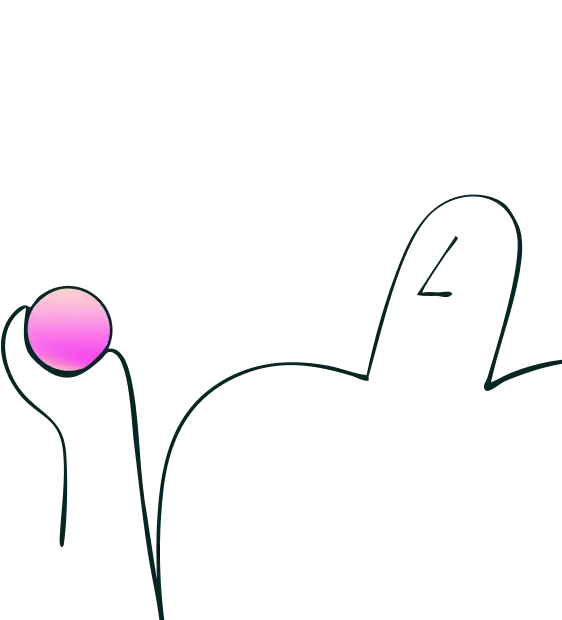13 Feb 2024
|11 min
Agile UX vs Lean UX
Learn about the Agile UX vs Lean UX debate. See their differences and advantages to choose the best product development method.

If you’re reading this, chances are you’re either a UX designer or a researcher working in a product team, or you’re a product manager or start-up founder. It's also possible that your team is struggling because not everyone is on the same page.
Whichever title applies most to you, you’re here because you want to know more about Agile UX vs Lean UX approaches and be better informed about which unifying approach is best for you or your team.
Reading this guide, you’ll get:
A quick overview of Agile UX
A brief overview of Lean UX
The similarities and differences between Agile and Lean UX
The pros and cons of each approach
Some tips on how to choose the right direction for you and your team
Let’s start with Agile UX.
Agile UX: A quick recap
In a nutshell, Agile UX is the marriage between Agile software development and user experience design.
In theory, Agile methodologies are based on the Agile Manifesto, a document that outlines the priorities of the Agile approach.
On the practical side, it’s based on the Scaled Agile Framework (SAFe), where businesses break down project management into a series of iterations (or “sprints”). Agile teams do this using methods such as Scrum and Kanban.
With Agile UX, UX team members are deeply involved in the product development process early on instead of being an afterthought.
The Agile development process for UX has four main stages: discovery and planning, design, testing, launch, and iteration. These stages circularly follow each other, creating a continuous product discovery design process.
The Agile process is more adaptive and flexible than traditional UX waterfall methods.
Lean UX: A quick recap
Another similar approach to UX research and design is Lean UX. According to authors of the Lean UX book, Jeff Gothelf and Josh Seiden, Lean UX is a process that models itself after Lean startup principles:
Remove waste in the process.
Harmonize teams to create cross-functional collaboration.
Adopt a model based on experimentation instead of a single point-of-view solution.
The Lean methodology ensures that what the design team creates moves the team’s learning forward. Within the Lean UX design process, there’s a great focus on continuous improvement by including user feedback early and often. To get this feedback from users, Lean UX teams depend a lot on building MVPs (minimum viable products).
As a result, Lean UX also offers a continuous product discovery workflow. Generally, it’s organized into three main stages: outcomes, assumptions, and the hypothesis Statement; product design and building an MVP; and research and learning.
Elevate your research practice
Join over 320,000+ marketers, designers, researchers, and product leaders who use Lyssna to make data-driven decisions.
What are the similarities between Agile UX and Lean UX?
From the overviews above, you’d likely conclude that both methods are similar. And you’d mostly be right. Agile UX and Lean UX share many similarities thanks to having foundations in Agile software development.
First, Agile and Lean UX focus more on the process than documentation and deliverables.
Second, both approaches have similar benefits in the sense that they’re both user-centric and less prone to information silos (more on this in the pros and cons section below). They also use user stories for personas and fast feedback, and work in iterative cycles.
Both approaches also ensure all stakeholders are highly involved in product development. Let’s also try comparing the development processes side by side, like so.
They look pretty similar, right? Think, design/build, learn/iterate. These are both Agile and Lean UX processes in their simplest form.
If Agile UX and Lean UX are so similar you might ask “What’s the point in distinguishing them?” It’s fair to ask, but the better question is, “What makes them different?”
Are there any differences between Agile UX and Lean UX?
In their book on Lean UX, Jeff and Josh suggest that Lean UX design philosophies are based on Agile development and Design Thinking – which means it does branch off or “evolve” differently to Agile UX.
While the development team style and function are very similar, the key difference between Agile UX and Lean UX is their priorities – Agile UX prioritizes user testing and research, while Lean UX focuses on learning loops through building MVPs.
That’s not to say Lean UX teams don’t care about user research; it’s just that most of the UX work in Lean teams goes towards validating hypotheses with MVPs.
As such, you can imagine where teams spend more time and effort depending on the product management style they’re using.
Pros and cons of both approaches
You wouldn’t need to spend time reading an article like this one if you already knew which style was “the best” (spoiler alert: there’s no “best approach,” it’s more a matter of which works better for the project you’re working on).
However, we can get an idea of the benefits and drawbacks of each to see what you might experience either way.
Pros of Agile UX
Greater team collaboration: In Agile UX, the idea is to bring people of multiple disciplines together – product owners/managers, designers, and developers. As a result, everyone gets solid input, and the collaboration helps build better products (in theory).
Lots of flexibility: The Agile development methodology means bigger projects are always chopped into smaller, more manageable pieces.
Saves time and money: Unlike the classic Waterfall approach, Agile doesn’t need everything on a timeline and specific tasks completed before others begin.
Helps create products in tune with user needs: The efficient process Agile UX promotes means teams can get products that meet end users’ needs more frequently.
Pros of Lean UX
Continuous learning: Much like Agile UX, Lean UX has a cyclical idea>design>build>learn pattern. Lean UX is more practical about this, emphasizing the middle of the process.
Raises customer expectations: With quick iteration cycles, you raise your customers’ expectations with better quality products and response times to issues they identify.
Builds customer feedback into the core of the design: As mentioned above, the main priority of Lean UX is to get an MVP into the hands of customers ASAP to get feedback on ideas. This process, by definition, is customer-centric.
Helps prevent the “curse of knowledge”: Your customers don’t know everything you know about the product. But by involving them in early iterations, you and your customers are learning simultaneously.
Cons of Agile UX
It’s harder to implement across large organizations: Large organizations tend to have a lot of documentation and oversight – which is incompatible with the transparency needed in Agile. The larger the team, the harder it is for those using an Agile structure to manage.
People like to ignore the costs of change: If a team member makes an early mistake and no one catches it, it can be hard to fix later if there have already been multiple iteration cycles. With the source code constantly changing, it can be hard to keep up.
It takes practice: Agile UX isn’t a magic pill you can take. The less experienced you are being an Agile team, the more likely you are to make mistakes.
The style doesn’t suit everyone: Some individuals prefer supervision, oversight, and documented processes. Agile UX focuses on self-organization, which can be a big culture shock for some.
Cons of Lean UX
Lean UX is also only suited to small teams: Lean UX suffers the same problem with larger teams – it’s harder to manage and collaborate.
With a focus on practical builds, the research can suffer: The Lean UX process promotes thinking about and building ideas before conducting real usability research. Even then, sometimes the only research is informal.
It’s easy to make too many assumptions: People involved in the product may think they know everything about it, which can produce a lot of untested assumptions at the beginning of the process.
Teams can lack empathy if they don’t understand the “curse of knowledge”: Teams need to understand the “curse of knowledge” concept before using the Lean UX approach – if not, they could end up building products or features customers don’t want or understand.
How to choose the right approach
One trick that can help you determine if Agile UX or Lean UX suits your team and your project the most is to weigh the pros and cons above. Though given the similarities between each methodology, the pros and cons of each are often interchangeable.
The next best trick to choosing which approach is right for your team is answering the following questions:
Are you developing a new product? If so, you’ll likely want to focus more on research. In which case, Agile may be the better approach.
Are you looking to improve on an existing product? Building out quick prototypes with a Lean UX approach might be better.
What are the strengths of your team? Do you have more research-oriented people or development-oriented people?
How big is the team? While both approaches thrive on small teams, Lean UX suits even smaller teams.
Answering these questions should help you better understand which approach best suits your team and the project you’re working on. Remember, you don’t have to pick one and stick to it forever. Your team and users’ needs can change, so it’s always worth reflecting and checking with each new project on your management style.
Test the waters with Lyssna
No matter whether you choose to take an Agile UX or Lean UX approach, both methods involve usability testing at some point in their respective development cycles.
With Lyssna, you get a range of robust usability testing tools that satisfy the needs of both management styles. The variety of tools can help Agile teams gain multiple perspectives and results to work from. Meanwhile, Lean UX teams that need results quickly can get them in less than a day testing in Lyssna.
The best teams use Lyssna to deeply understand their audience and move in the right direction – faster.
Your go-to user research platform
The best teams use Lyssna so they can deeply understand their audience and move in the right direction — faster.
Alexander Boswell is the Founder/Director of SaaSOCIATE, a B2B SaaS, MarTech and eCommerce Content Marketing Service and a Business PhD candidate. When he’s not writing, he’s playing baseball and D&D.
You may also like these articles


Try for free today
Join over 320,000+ marketers, designers, researchers, and product leaders who use Lyssna to make data-driven decisions.
No credit card required






